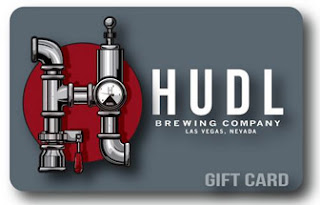The Board upheld a Section 2(e)(5) refusal to register the design of the Eames chair (shown below) for "furniture, namely chairs," finding the configuration to be
de jure functional. The well known Eames chair was designed in the 1940s and was recognized by Time magazine as the Best Design of the 20th Century. The Board applied the ever-popular
Morton-Norwich factors in concluding that "[t]he patent evidence, the advertisements touting the utilitarian advantages of significant design features of the proposed mark, and the limited availability of alternative designs that would work equally well highlight that the features of the proposed mark affect the cost and quality of the chairs."
In re Herman Miller, Inc., Serial No. 88027008 (August 25, 2021) [not precedential] (Opinion by Judge Cynthia C. Lynch).
The proposed mark is described as: "The mark consists of a three-dimensional configuration of a chair comprised of a curved trapezoidal seat and back, each with rounded corners but different curvatures and proportions, two arched legs, each of continuous material and offset heights which narrow toward the ground. The broken lines depicting the spine of the chair indicate placement of the mark on the goods and are not part of the mark." [Emphasis supplied].
The Eames Patent: Charles Eames obtained a utility patent in 1951 on a "Furniture Construction" (pdf here) depicted therein:
Reviewing the '490 patent, the Board found that "the contours of the seat and back, the single-piece designs and differing heights of the leg frames, as well as their placement along the spine, contribute to the 'restful and comfortable' nature of the chair, and the ability to 'inexpensively manufacture [it] by mass production methods,' as explicitly stated in the patent."
Applicant Herman Miller, noting that the spine of the chair is not part of the proposed mark, argued that “the spine is the invention, and the specific seat, back, and legs claimed in the Eames Molded Plywood Chair Design are not essential to the invention." The Board was not persuaded: "[T]he patent claims features of the seat, back, and legs found in the proposed mark, and claims the manner of placement of these features on the spine, as found in the preferred embodiment chair, just as they appear in the proposed mark."
Applicant cannot avoid the functionality refusal merely by dotting out the spine, but retaining all the other elements in the ‘490 Patent’s preferred embodiment, which are constructed in a particular manner around and joined to the spine in exactly the configuration shown in the proposed mark.
The Board observed that, in order in order to practice the invention of the now-expired ‘490 Patent, as depicted in its preferred embodiment, "the features of Applicant’s proposed mark must be constructed as they are shown in the ‘490 Patent and placed around the spine in the manner that they appear in the proposed mark."
The ‘490 Patent indicates that the features of the proposed mark are essential to the use and purpose of the chair, and affect its cost and quality. The patent thus is strong evidence that the matter is functional. See TrafFix, 58 USPQ2d at 1005; Becton, Dickinson, 102 USPQ2d at 1377. To issue a trademark registration covering Applicant's proposed mark would frustrate the policies of patent law whereby, upon the expiration of the ‘490 Patent, competitors should be free to practice the invention. See TrafFix, 58 USPQ2d at 1007; Valu Eng’g, 61 USPQ2d at 1425.
Advertising: The Board found that "significant features" of the proposed design mark are touted in Herman Miller's advertising, emphasizing, for example, the curve of the seat and back and their contouring to fit the human body. One third-party seller described the shape of the back as “low and expansive” to support ergonomics and “help[] your circulation." The Board concluded that the proposed mark "looks the way it does in order to be a better chair, not in order to be a better way of identifying who made it (the function of a trademark)."

Alternative Designs: The Board pointed out that when the first two Morton-Norwich factors demonstrate that a proposed configuration mark is functional and affects the cost and quality of the product, the availability of other designs is irrelevant. See, for example, TrafFix, 58 USPQ2d at 1005; Becton, Dickinson, 102 USPQ2d at 1378. Nonetheless, the Board observed that the record evidence, "including the patents, the advertising, and the articles on Charles and Ray Eames and their chair design at issue, makes clear that competitors would be disadvantaged in trying to find alternative designs that would work equally well."
Method of Manufacture: The fourth Morton-Norwich factor - whether the design results from a relatively simple or cheap method of manufacturing the product - is likewise irrelevant in light of the Board's findings regarding the first two Morton-Norwich factors. The Board addressed this factor anyway.
Noting the absence of current evidence about Herman Miller's cost of manufacture, the Board found the record inconclusive. It rebuffed Herman Miller's assertion that the Board should consider the retail price of the chair (expensive), pointing out the price does not necessarily correlate with the cost of manufacture. "Applicant’s chair design has achieved considerable renown, and is a museum piece, which likely drives its retail price." The Board found this Morton-Norwich factor to be neutral.
Conclusion: In light of its findings under the first two Morton-Norwich factors, the Board affirmed the Section 2(e)(5) refusal.
Read comments and post your comment here.
TTABlogger comment: Any doubt that this will be appealed? Would Herman Miller have been better off not trying to register the proposed mark?
Text Copyright John L. Welch 2021.














































